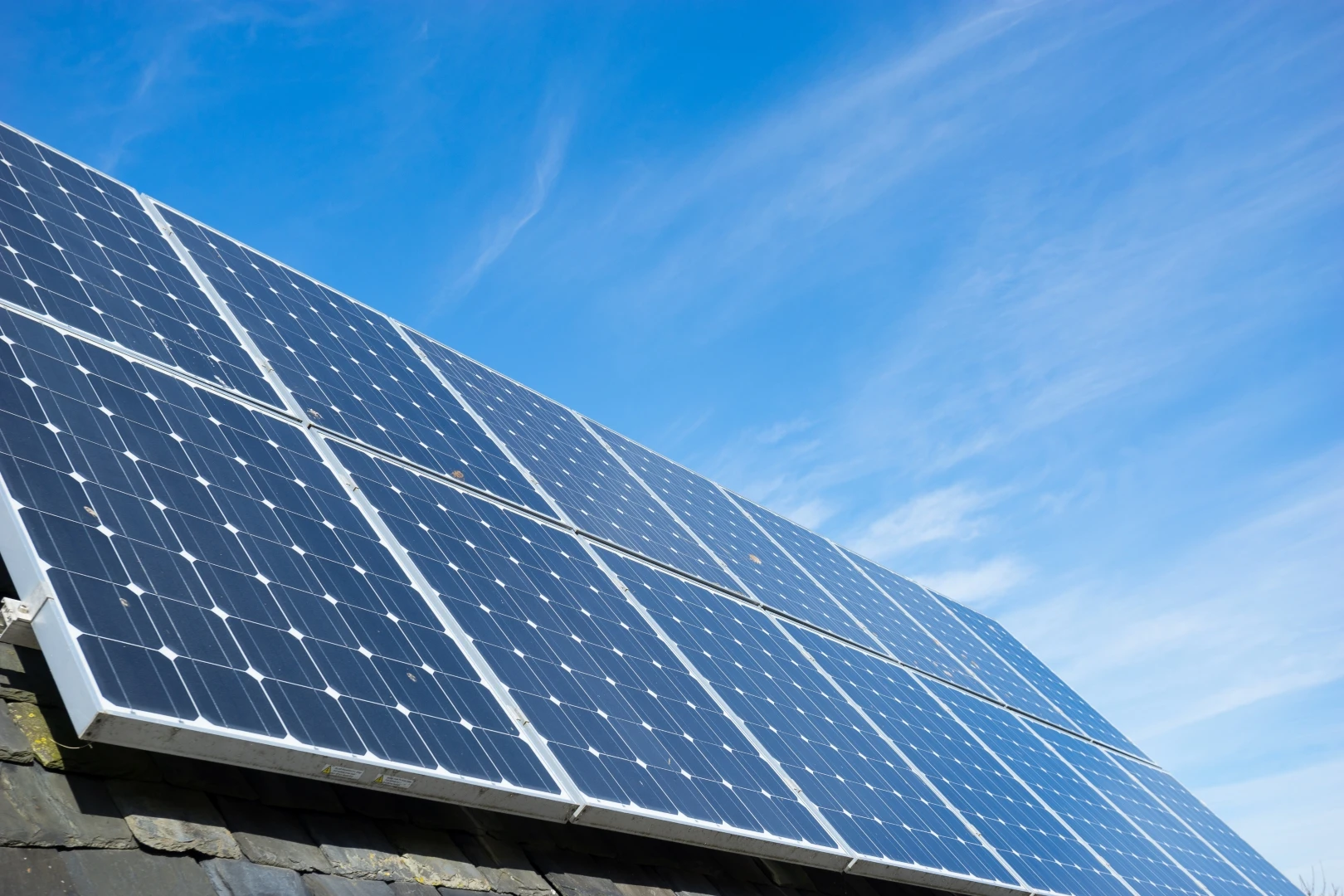Thinking about going solar but have a flat roof? You’re not alone! Many homeowners and business owners wonder if flat roofs are a dealbreaker for solar panel installation. The good news is that flat roofs can actually offer some surprising advantages. In this blog, we’ll break down everything you need to know so you can decide if a flat roof setup is right for you.
Are Solar Panels Compatible with Flat Roofs?

Solar panels are compatible with flat roofs, and in many cases, they’re a great fit. Flat roofs, commonly found on commercial buildings and some modern homes, offer a wide, unobstructed surface area that can be ideal for solar installation. But because they don’t have a natural tilt like pitched roofs, a few extra considerations come into play.
With pitched roofs, panels are often mounted flush to match the angle of the roof, which helps capture optional sunlight without much adjustment. Flat roofs, on the other hand, require mounting systems that slightly elevate and tilt the panels to catch the sun’s rays more efficiently. This tilt is essential—without it, your panels might miss out on key hours of sunlight or collect debris and water more easily.
The good news? These angled racking systems are designed specifically for a roof that is flat and can be customized to suit your structure, ensuring maximum energy production. In fact, the flexibility of a flat roof can be a major advantage—you can decide the best orientation, avoid shading, and even install more panels than you could on a crowded, sloped surface.
Mounting Systems for Flat Roof Solar Panels
When it comes to installing solar panels on a roof, choosing the right mounting system makes all the difference. Ballasted racking systems are a popular, non-penetrating option. Instead of drilling into the roof, these systems use weights (like concrete blocks) to hold the solar panels in place. They’re ideal for buildings where roof integrity is a concern or where penetrating the roof membrane could cause issues. They’re quick to install, and because there are no holes, there’s a lower risk of leaks.
Tilted mounting systems are designed to give your panels the best angle for sun exposure. This tilt helps boost energy production by catching more sunlight throughout the day. Whether paired with ballasted systems or anchored with roof penetrations, the angle matters—and even a modest tilt can improve output.
If your roof can handle it, penetrating systems offer more long-term stability, especially in high-wind areas. But for many fitness centers, cafes, and homes, non-penetrating systems are a safer, easier fit. With the right mounting system, your roof becomes a powerful platform for solar energy.
Advantages of Installing Solar Panels on a Flat Roof
Flat roofs offer a surprisingly solar-friendly setup. One major perk is the flexibility in panel placement. Unlike angled roofs, you’re not stuck following the roof’s slope. You can position panels for optimal sun exposure year-round.
Flat roofs also make maintenance a breeze. No steep angles mean safer, easier access for cleaning or repairs. Plus, solar panels on these roofs often have a cleaner aesthetic, since they’re usually hidden from street view, which is perfect if you want to go green without changing your building’s look.
Best of all, flat roofs typically have more open, usable space, allowing you to install more panels and increase energy output. Whether you run a busy cafe or a growing gym, that extra energy can translate into real savings.

Challenges and Considerations
While flat roofs can be great for solar panels, there are a few things to keep in mind. First up: weight load and structural integrity. Your roof needs to support not only the panels but also the racking system, something a professional installer will assess before starting. Drainage can also be tricky. Flat roofs are more prone to water pooling, so panel placement must allow for proper water flow to avoid damage or leaks.
You’ll also need to factor in local building codes and permits, which vary by location. Some areas have strict guidelines on mounting systems or aesthetic impact, especially in historic or commercial districts.
Lastly, be aware of potential shading from nearby buildings, trees, or HVAC units. Even partial shade can reduce energy efficiency. A thoughtful layout and expert guidance can help you navigate these challenges and make the most of your flat roof’s solar potential.
Professional Assessment is Key
Installing solar panels on a flat roof isn’t a one-size-fits-all job. A site inspection and engineering review are essential to make sure your roof can handle the system and that it’s designed for peak performance. At LGND Energy, our experienced team customizes every setup for maximum sunlight exposure and long-term efficiency. We handle everything, from assessing structural load to optimizing panel layout, so you don’t have to guess. Ready to make the most of your flat roof? Contact us at LGND Energy today and take the first step toward smart, sustainable energy.



Follow Us